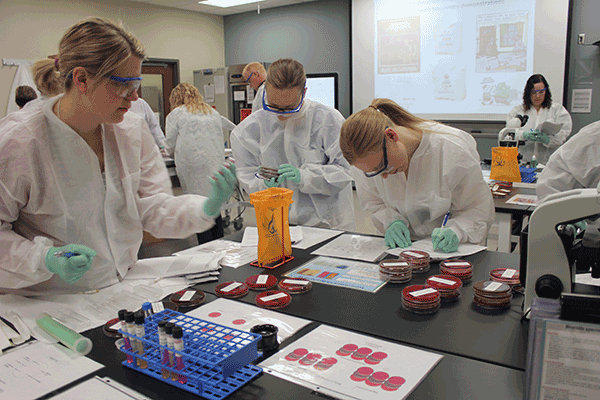Clinical labs learn bioterrorism rule-out protocols

Guided by SHL staff, participants used inactive specimens to identify highly infectious diseases and “select agents,” that have the potential to pose a severe threat to public health and safety.
Sentinel labs are part of the Laboratory Response Network (LRN), which was established by the Department of Health and Human Services and the Centers for Disease Control and Prevention to ensure an effective laboratory response to bioterrorism in the United States. These laboratories conduct rule-out testing, which either identifies the specimens as not bioterrorism agents or refers them on to a “reference” lab. Reference labs perform confirmatory tests for biological agents.
“Sentinel laboratories are considered an integral part of public health security because they typically will be the first organizations to recognize potential bioterrorism agents in patients,” said Wanda Reiter Kintz, Director, Office of Emergency Preparedness.
 Clinical lab staff practice how to test for highly infectious pathogens during SHL’s "Identification of Bioterrorism Agents" workshop. Thirteen Iowa hospitals participated in this annual training.
Clinical lab staff practice how to test for highly infectious pathogens during SHL’s "Identification of Bioterrorism Agents" workshop. Thirteen Iowa hospitals participated in this annual training.
As Iowa’s LRN reference laboratory, the Hygienic Lab conducts confirmatory testing of any potential bioterrorism agents forwarded by the sentinel lab network. It also provides training to Iowa sentinel labs to improve their ability to respond to bioterrorism, chemical terrorism and other public health emergencies.
“It is important that clinical laboratorians understand rule-out protocols, even if they do not encounter biothreat agents routinely in their work, because these organisms are naturally occurring and potentially deadly if untreated,” said Reiter Kintz.



